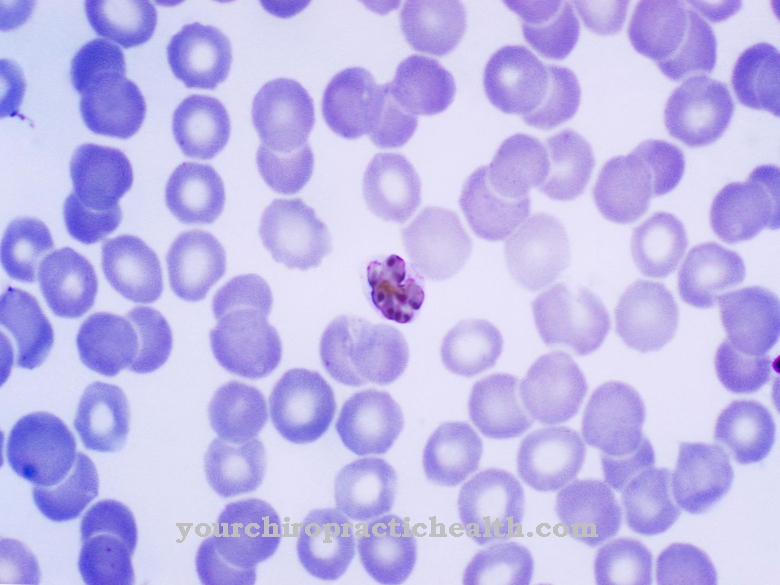Fox tapeworms are parasites that live at the expense of their intermediate hosts and main hosts and implant themselves in their tissues. The endoparasites mainly use rodents as intermediate hosts, weaken them and, together with the animal, are ingested by larger mammals such as foxes. For humans, the infection with the fox tapeworm is often fatal if left untreated.
What are fox tapeworms?
The fox tapeworm is also called Echinococcus multilocularis known. It is a parasitic form of life from the class of tapeworms. According to the system, it belongs to the subclass of real tapeworms or Eucestoda, among which it belongs to the order Cyclophyllidea and family Taeniidae. The species belongs to the tapeworm genus Echinococcus and thus corresponds to an endoparasite from the Cestoda group.
Echinococcus multilocularis is up to three millimeters long and consists of up to five tapeworm limbs, so-called proglottids.Fox tapeworms have four suction cups and a hook in the head area. So they can attach themselves to the intestinal wall of their hosts. The hooks are arranged in circles around the suction cup and form groups of up to 18 hooks with a length of up to 34 micrometers.
The fox tapeworm is only common in the northern hemisphere, especially in Germany, Switzerland and eastern parts of France. The distribution of the fox tapeworm is dependent on suitable hosts and intermediate hosts, which are only found in temperate to cold-temperate climates in the northern hemisphere.
Parasites always harm their hosts. The infestation with Echinococcus multilocularis must therefore be regarded as pathogenic.
Occurrence, Distribution & Properties
Like all endoparasites, the fox tapeworm feeds at the expense of the host organism. It absorbs nutrients directly through its body surface. The fox tapeworm does not have an intestine. Mice and small animals act as intermediate hosts. The main hosts include larger mammals, especially the fox and the dog.
Fox tapeworms live within the small intestine of final hosts. Their eggs mature in their reproductive limb. As soon as the reproductive limb is rejected, the first instar of the next generation of larvae is complete.
The eggs travel down the host's intestinal tract and are excreted by the host. A fox tapeworm produces up to 200 eggs a day. The excreted eggs remain infectious for months under the most unfavorable climatic conditions. Intermediate hosts such as rodents take up the eggs again. The capsule of the larvae dissolves and oncospheres, so-called hexacanthene larvae, are released. These larvae pass through the intestinal mucous membrane of the intermediate host to enter the bloodstream. They travel via the bloodstream to the liver of the intermediate host or affect the lungs, heart and spleen.
The oncospheres establish themselves in the tissue of the organs and there go into the larval stage of the metacestodes or fins. Thanks to the formation of gelatinous blisters, they are separated from the host's tissue. Little by little, more fins bud from the metacestodal wall and infiltrate the tissue. Like metastases, they migrate to other organs via the bloodstream. In the third larval stage, protoscolices with indentations on the head form.
The infection makes the intermediate host so weak that it is easy prey for potential final hosts such as foxes, dogs or cats. Even after the death of the intermediate host, the larvae remain infectious in the carcass and can thus spread as a carrion infection.
The protoscolices are detached from the tissue of the intermediate host in the digestive tract of the final host and grow into adult worms in the small intestine of the main host.
Humans are most often infected with the fox tapeworm through contaminated mushrooms and wild berries. Smear infections after contact with the forest floor are also a source of infection. Dogs, foxes and cats can also infect humans through contact with barely noticeable traces of faeces.
Illnesses & ailments
The fox tapeworm causes alveolar echinococcosis in humans. The infectious disease manifests itself through characteristic cyst formation in the body. Typically, fox tapeworm cysts grow invasively, i.e. invade the tissues of the organs. Mostly they are the size of a hazelnut and grow in clusters.
The cysts are interwoven with connective tissue and granulation tissue and are connected to one another. By forming cysts, the infection destroys the affected organ piece by piece. In many cases, the infection spreads further in the body via metastasis and over time affects organs located further away. The clinical signs are similar to those of carcinoma. Depending on the organs involved, the individual symptoms can vary from case to case. Organic functional impairments of all kinds can occur.
Therapy is essential to improve the prognosis. Ideally, all Echinococcus cysts are surgically removed. However, since the cysts infiltrate the tissue, chemotherapy with albendazole or mebendazole is carried out in most cases.
There are no specific drugs against the tapeworm species. Prophylaxis plays the most important role in connection with fox tapeworm infection. The fox tapeworm larvae die at temperatures of 70 degrees Celsius. Therefore, canning food is an appropriate prevention. Slaughterhouse waste and raw meat for dog and cat food can be cooked through and the pets regularly dewormed. Forest fruits and mushrooms are ideally washed thoroughly and heated sufficiently before they are consumed.
Immunosuppressed patients are at greater risk of developing fox tapeworm.

















.jpg)



.jpg)

.jpg)




